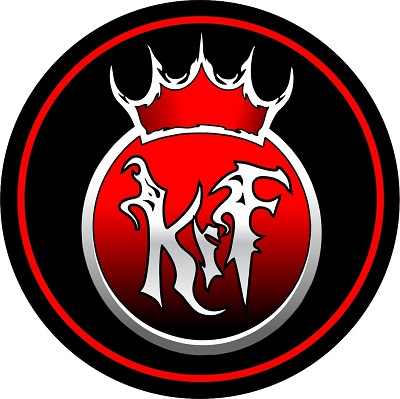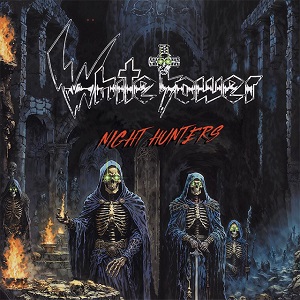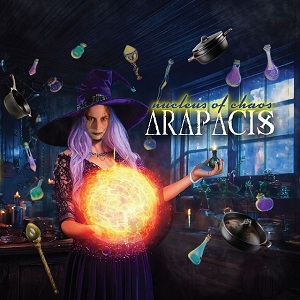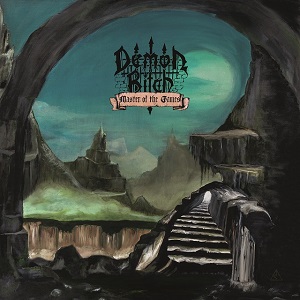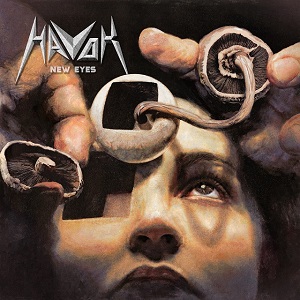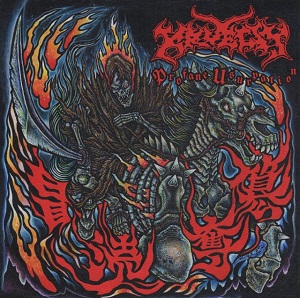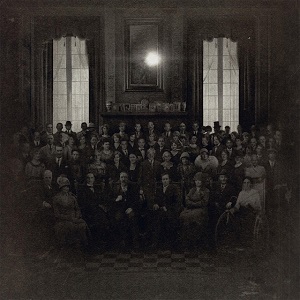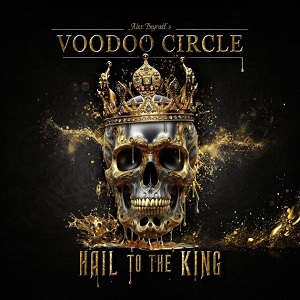TODD KERNS Talks New SLASH Album Living The Dream – “Every Single Song Will Get Played Live”
October 11, 2018, 6 years ago
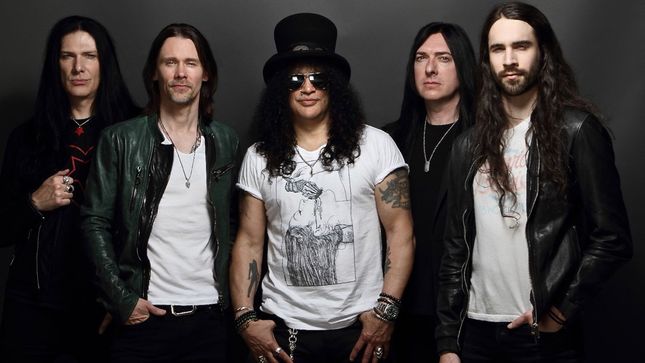
“Objectively, you never know what people are going to think,” admits bassist Todd Kerns, speaking exclusively to BraveWords scribe Aaron Small about Living The Dream – the newly released album from Slash Featuring Myles Kennedy And The Conspirators.
“I walked away from it going, I think we’ve kind of streamlined what we do to the strongest thing we do,” continues Todd. “The last album (2014’s World On Fire) was 17 songs – it felt like a double album. This one was a lot more… initially Slash wanted to do a ten-song album (Living The Dream contains 12 songs). In this day and age, you’re usually around 13 songs on a CD. But, it’s the wild west again; no one really knows how it’s supposed to work as far as what you’re releasing, how it’s being released, what format people are hearing it in. I think he was just interested in making a succinct album; like the albums we grew up on, Van Halen and KISS – those albums were eight to ten songs. You’d blast through it real fast and press play again.”
The cover art for Living The Dream was created by Ron English, who also did World On Fire. This image, pictured below, is instantly reminiscent of Andy Warhol’s Marilyn Monroe. “Yeah, totally,” agrees Kerns. “It has elements of that for sure. And all the artwork we’ve been using for the t-shirts has these sorts of pastel-type colors to it. Slash is a visual arts kind of guy. He comes from a background – his father was an artist, and his mother was a designer. So, he has the idea of this is the theme of the tour. I definitely think that’s some sort of nod to those Andy Warhol images; I think you nailed it right on the head there.”
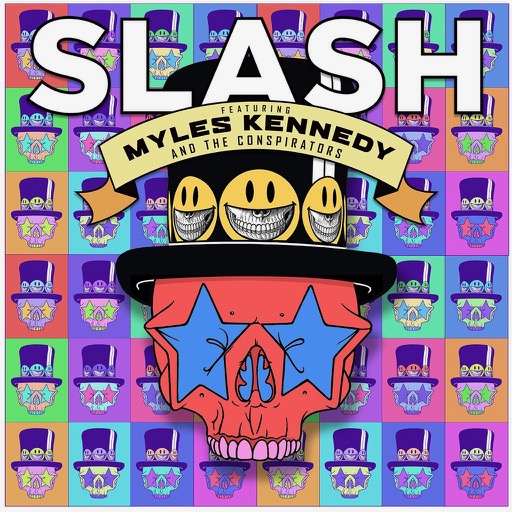
Slash has been kind of vague about the album title, Living The Dream. The Guns N’ Roses and Velvet Revolver guitarist has been quoted as saying, “It’s more of a sarcastic statement towards domestic politics, and global politics really.” “I don’t know anything about the politics side of things,” says Todd. “But we have always used (the phrase) living the dream. It’s like, what are you doing this weekend? ‘I’ve got to deal with my septic tank and a new air conditioner unit being put in. You know, living the dream.’ Anything that’s really shitty. ‘My car broke down, and I had to get this and that done, living the dream.’ It was always that mildly sarcastic thing. I think the fact that we had CNN on every day in the studio… you’d walk in and it was like, ‘what’s going on now?’ (Drummer, Brent) Fitz brought it up the other day, he said, ‘I feel like that entire record was made around the beginning, and tapering off, of the Stormy Daniels scandal.’ He’s probably right. It was one of many heavy drama things going on within the world we live in. That’s Slash’s take on it I guess. We always use Living The Dream as the term for the irony of doing something that is not necessarily living the dream. At the same time, a lot of people have attached the very positive side of it; ‘You do live the dream. You get to play music and travel around.’ They’re right. That’s definitely part of it. And that just doesn’t have to be about musicians playing music. It could be about anybody living their life.”
Was there ever an attempt at writing a song called “Living The Dream”? “There wasn’t, which is kind of funny because on World On Fire and Apocalyptic Love, Slash had said, ‘I’m waiting for the song titles to see which one is a good album title.’ I thought that was really interesting; Apocalyptic Love was a song, World On Fire was a song. But this one, he sort of had the title even before we got into making the record. He kind of had that in his head right away. Myles (Kennedy, vocalist) very well could have taken that title and ran with it if he wanted to, but it never materialized. He may have taken an attempt at it, but I don’t know that it ever went anywhere.”
This is the first SMKC album that rhythm guitarist Frank Sidoris actually plays on. He’s been a touring member for years, and now we can finally hear his contributions in the studio. Did that make the process any easier, or more difficult; working as a five-piece instead of a four? “I think it made things easier. It made things more complete. It’s kind of a confusing thing, Slash Featuring Myles Kennedy And The Conspirators, in that people do refer to it as Slash’s third solo album, or fourth solo album, whatever they call it. It very much is a group. If it was just called The Conspirators, I think people would just take it as a band. It pretty much is a band. Obviously, we have the legend, the Rock and Roll Hall of Fame guitar player in the band; that’s a no brainer. Myles (from Alter Bridge) is no slouch himself. The fact that we had done the Apocalyptic Love tour with Frank, and then we went into World On Fire… I think Slash had just become accustomed to working in a certain way. He just went into the World On Fire record with the same working parts as it were.”
“I don’t think it was really about not using Frank, it was more a case of, this is how we do things. I always think it’s best, when you have two guitarists that really complement one other and know how to work together… that’s the coolest thing about Frank. A lot of guitar players have to check their ego when they play with Slash; even (GN’R rhythm guitarist) Richard Fortus. Richard does get to stretch out quite a lot; Richard is more than qualified to be the lead guitar player in any band, but he has to stand next to Slash, who is larger than life in that sense. Frank has a really great ability at being able to complement what Slash does, both with his tone and his parts. I think a lot of that shows in things like, even the first single (‘Driving Rain’) is this interesting harmony-type lick that goes on right in the middle of the verse. I think they work really well together that way. And it really does feel complete now that the five of us are all on the record. It makes it that much better.”
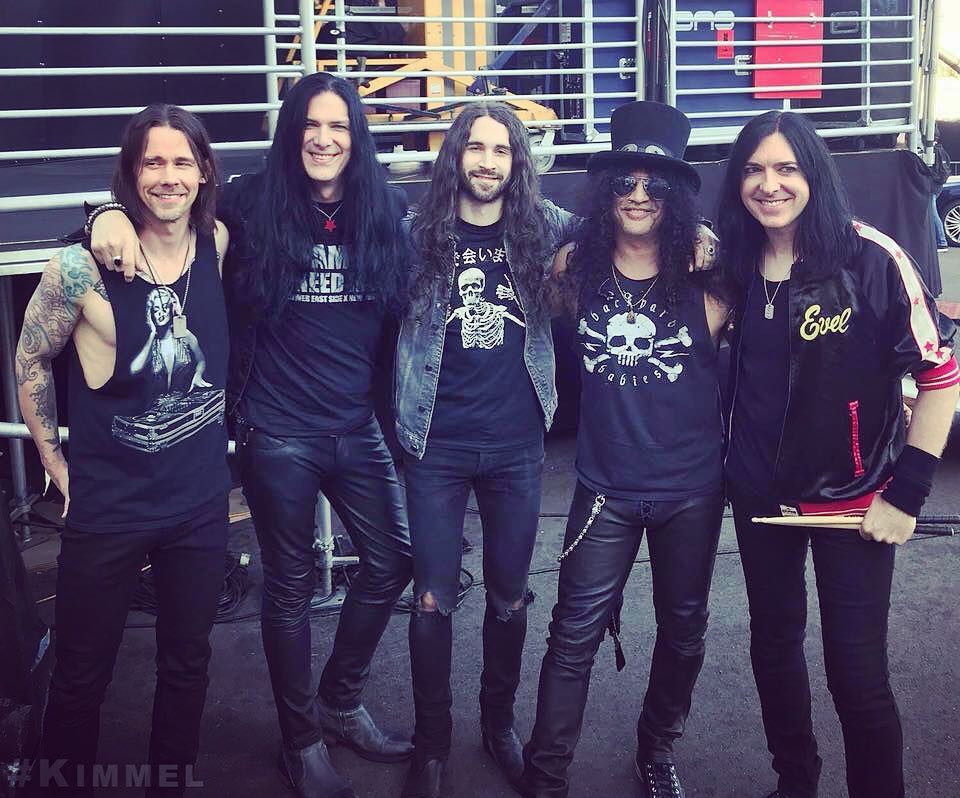
Living The Dream was recorded in Slash’s new studio, appropriately named Snakepit, located in Los Angeles, California. This was the first time the band used Pro Tools; previously everything had been laid to analog tape. However, Slash’s studio wasn’t equipped with a tape machine, and it’s also becoming a prohibitively expensive format to utilize. “I think everyone in the know will always say their preference is working with tape. It’s also not just a case of it being expensive, it’s a case of the technology getting such that it’s becoming more and more negligible as far as the difference goes,” clarifies Todd. “I consider myself fairly knowledgeable in some respects, and I really do trust my ears. But as time goes by, I’m starting to become more and more blown away by what people are doing inside of a computer. It’s like, what amps are you using? ‘Oh, they’re not amps.’ Oh my God!”
“It’s a whole new world. Even though we have never gone there within The Conspirators; I don’t think Slash would ever work outside of using his real amp setup, it lent itself to us wanting to do it at his place. That was the setup we had, so let’s just do it and see what happens. I would challenge anybody to say the record sounds hindered in any way by not having used tape. We were in there recording rehearsals and demos right there in the studio. So, the songs themselves were being put together in the exact same format we ended up recording the album in. We did go into NRG Studios in North Hollywood for drums and bass, just because you want a nice big room for that, and we really like that room. Brent and I are both very fast. We spend a whole lot of time in pre-production working on our parts, and by the time we went in to do the drums and bass, we rattled those off in a few days. Then we were back at Snakepit doing guitars and vocals.”
Diving into some of the individual songs on Living The Dream, album opener “The Call Of The Wild” somewhat relates to what we were just talking about. Myles has a great line in there that reads, “An abomination, It’s the new disease, Well the time has come, to power down and breathe.” Technology really is a double-edged sword. “It is, yeah. It’s funny you say that, because I sing along with Myles on a nightly basis. I’m singing the harmonies, and I’m sort of inside these songs probably more than the other guys when it comes to lyrics; I know what’s being said. That song in particular is really, ‘turn up the silence and put out the fire’; we need to at least be aware of it. You and I are right now speaking in a medium that wouldn’t exist if I didn’t have this cell phone in my hand. Obviously, it’s become a part of our day to day life that’s really never going to go away.”
“I think a lot of us have to be conscious; I have been conscious in my own life to be sort of… I find, even watching a film now. I’ll be watching a movie on the bus or in my house, just sitting there watching a movie. There was a time where I didn’t have a cell phone, so I just watched the movie. I was aware of all the sub-text and dialogue; everything that was going on. Now, we find ourselves kind of half watching, half on our phones. A lot of which I use the excuse – my kids, my wife, and my family are all around the world and I’m constantly in contact with them, and that can happen at any given moment. I want to be available if someone reaches out to me. But at the same time, it’s not like things can’t wait five minutes – or 90 minutes if you’re watching a movie. As a cinephile myself, or a guy who loves music… the idea of vinyl. When we were kids, we’d buy whatever record it was, you’d put it on and sit there and listen to the record. Which I think still exists in the medium of vinyl now. Where, when I’ve got music on my phone, or in any other medium, it’s like I’m not really focused on it. But I find it especially with television and film, we’re half watching and half talking to somebody on our phone, or texting, or looking at Instagram. I can’t speak for Myles, but I know what it says to me is the sort of thing of being as present as possible. I’m really trying to get back into that mode again. It is a battle of trying to keep your social media game up, but at the same time being present for the people around you. But that song for sure definitely speaks to me.”
The video for “Driving Rain”, created by Stoopid Buddy Stoodios, features a band of ragdoll puppets! The treatment seems to harken back to yesteryear with the Jeep going over the cliff, drawing parallels to Slash driving the Mustang over the cliff in the “Don’t Cry” video. “Right. It’s kind of funny you say that, I hadn’t really thought of that. He was knocking the idea around with these guys; Slash hates doing videos. He hates the idea of lip-synching; it seems really painful to him, it feels really forced and phony to Slash. He told me that ‘Welcome To The Jungle’ was actually a performance. They performed that song multiple times and it was cut together into a music video. We did ‘You’re A Lie’ back on Apocalyptic Love; that was very much in the stock way of a lip-synching band performance and there’s a B-reel of something else going on, which is not his cup of tea. I think he was really happy to have a sock puppet form of himself play the song. Again, those guys didn’t take some sort of literal stance on the lyrics. They just did their own thing, and I think that’s what makes it so much fun. Somebody said, ‘There’s not even any rain in the video.’ That’s fine, who cares? It’s not really about rain.”
Hanoi Rocks has served as a big influence for Todd; in fact, he’s even played with Michael Monroe. Therefore, the similarity in title between “Boulevard Of Broken Hearts” from Living The Dream, and “Boulevard Of Broken Dreams” on Two Steps From The Move is glaringly obvious. “Of course. The term, Boulevard Of Broken Dreams, is used ad nauseum in some fashion or another. So, I thought the fact that he had thrown that spin into it, Boulevard Of Broken Hearts, is really interesting. That song is really a mild departure too; it’s very different for Slash to have gone into this sort of melancholy chord changes. It’s a very cool song, we haven’t played it live yet. We’re doing quite a few: “The Call Of The Wild”, “Driving Rain”, “Serves You Right”, “Lost Inside The Girl”. Slash is no joke when it comes to this stuff. It’s not like he’s not aware of what people want to hear; but he does have this sort of – ‘this is what we’re doing right now, this is what’s important, and this is why we’re here.’ During the World On Fire tour, we played every one of those 17 songs live in some fashion or another. The same can be said for Apocalyptic Love, every single song was played live. Definitely, in the course of the year we’re on the road, every single song from Living The Dream will get played live.”
Slash has said that “The Great Pretender” was definitely the hardest song on the album to put together, why was that? “We really messed with a couple of different timings… it had this almost waltz-type feel to it. We played it with one feel, then tried it with another feel, and eventually ended up where we are now. He was very particular about making sure that particular section really lined up; and I’m glad we did. It’s funny how some things just fall into place immediately; “Mind Your Manners” was a song that in the length the song actually is, was about how long it took to put the song together. But other songs tend to need a little bit of attention; that’s just part of the process.”
Todd reveals who be believes to be The Great Pretender. “I assume Myles is speaking about himself. I don’t know exactly, we haven’t been doing that one live, so I haven’t really got inside of it. But there’s something to be said about how sometimes you feel more like yourself onstage than you ever do in your life. It’s as if being a performer and a musician is actually who you really are, and your day to day of having to be a normal person is actually the act. It’s bizarre how you can feel totally comfortable in front of thousands of people, entertaining them, yet totally awkward at a strange dinner party, not knowing how it’s supposed to work. I don’t really know exactly where Myles was going with that, but that’s what I took away from it.”

There’s only one photograph of Slash Featuring Myles Kennedy And The Conspirators included in the Living The Dream CD booklet; it depicts the five band members sitting on a couch underneath a picture of Lemmy Kilmister from Motörhead – may he rest in peace. It serves as a really nice tribute. “That’s actually just the lounge at Snakepit. There just happens to be this amazing painting of Lemmy there; in and of itself, I think that’s completely on purpose, and completely happenstance at the same time. Lemmy was very important to all of us. We all had really great relationships with that man. I sing that song, ‘Doctor Alibi’ every night, and that’s part of my own legacy now, to be this sort of curator of what he and Slash did together. Trust me, when we started to do World On Fire, and this record, we had a lot of conversations – especially Slash and I – about the bass and how the most recent Motörhead record, we were both in love with the bass tone on it. There were chords, big open things going on. Lemmy definitely created his own style; he is the sound of Motörhead – his voice and that bass.”
Fans certainly welcome Todd singing “Doctor Alibi” live, and he sings lead vocals in his other bands outside of The Conspirators; including The Age Of Electric, Static In Stereo, Original Sin, and Toque. Was there ever any consideration given to you singing lead vocals for a song on Living The Dream? “It never really got into that. I watched Dave Grohl (Foo Fighters) talk about it recently… somebody asked him if he ever thought about singing something in Nirvana? He said, ‘No, why would I? We had the greatest songwriter (Kurt Cobain) in the world at that time.’ I kind of feel that way in this band. My position in this particular lineup is… I am here to support and do what I can to make this thing as great as possible. They show a great deal of faith in me all the time saying, will you sing this, will you sing that? Will you sing basically everything on the album to backup Myles? It’s a great deal of responsibility. The idea of singing a song, I think that still could possibly be something down the line; you never know. I do have, as you mentioned, a number of other things to scratch that itch. With this lineup, I’m perfectly happy to be in the position I’m in. I don’t feel like I’m not doing enough. It’s a lot of work. There’s a lot of guys who could play my bass parts, but there’s a lot more to the gig that I do that would be really challenging to almost anybody as far as being able to sing and play.”
“As long as this thing carries on in some form, which to be honest, I imagine it probably will – with obvious extended breaks here and there, depending on what everybody else is doing. I can’t imagine a reason not to do this at some point again. As far as Exile On Main St., or any of those Stones albums with a Keith (Richards) song on them. I’ve always been a big fan of The Beatles and KISS, where there’s multiple lead vocalists; that’s kind of cool. Joe Perry (of Aerosmith) sings a song here and there. Aaron, you know more than a lot of people what I’ve sang; a lot of people don’t. A lot of people listening to a Conspirators record know that’s Myles Kennedy from Alter Bridge, and Slash (from Guns N’ Roses); but they don’t know my history. It doesn’t mean I can’t carry my own or stand toe to toe with anybody, and I’m glad to do it. But, there’s sort of a format of how things work, and I’m happy to keep that going as long as we can.”
See if Slash Featuring Myles Kennedy And The Conspirators are playing live near you by visiting SlashOnline.com.

